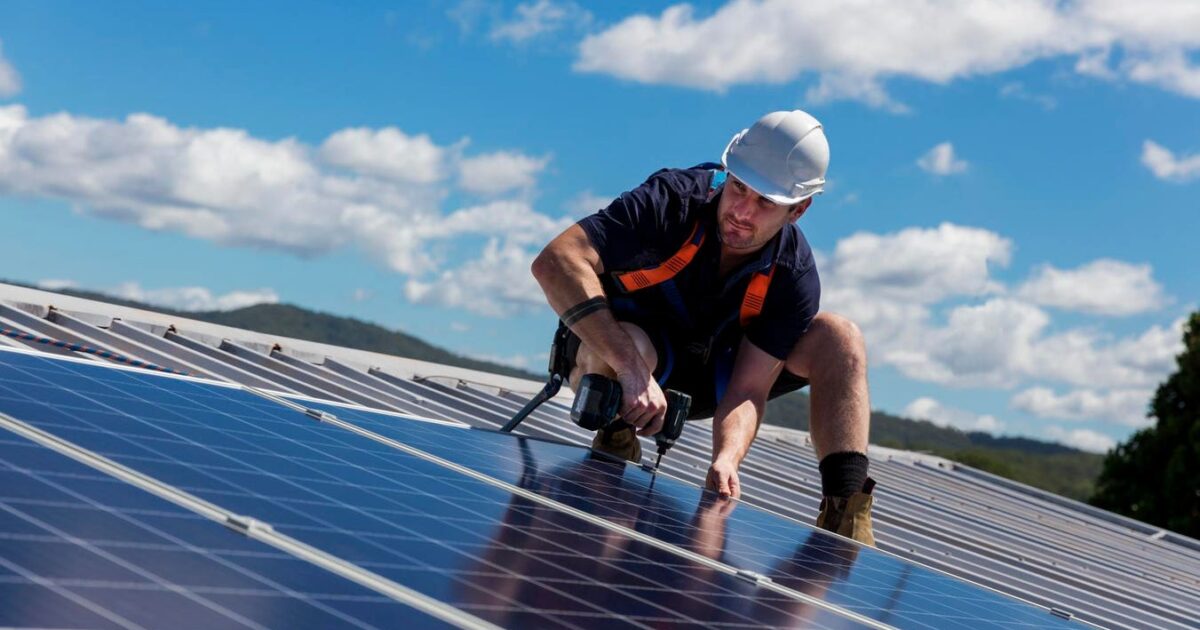What You Need To Know About Solar Power Technology Before Installing

Solar panel installer with drill installing solar panels on roof on a sunny day
getty
This article is part of an ongoing series on solar home installations, designed to help homeowners understand not just the “why” of solar power but also the “how.” In the first installment, we explored how solar works and why it pays off. Now we turn to the technology itself to understand what options exist, what new innovations are on the horizon, and what questions every homeowner should be asking before signing a contract.
Types of Solar Panels
Not all solar panels are created equal. There are currently three main types of panels in today’s market which includes monocrystalline, polycrystalline and thin film panels. Here are the details of each:
- Monocrystalline panels are made from a single silicon crystal, these panels typically achieve 17–22% efficiency. According to a CNET review, monocrystalline panels combine high efficiency with a uniform black finish that many homeowners find visually appealing. Their ability to produce more power from less space makes them especially valuable for smaller rooftops. This is because they have a high energy conversion efficiency as they produce more power per square foot when compared to other types. So while they tend to cost more upfront, they will deliver the best long-term yield. Further more, they typically last longer than other panel types, with many continuing to perform well beyond their 25–30 year warranty periods.
- Polycrystalline panels are often times called multi-crystalline. They are generally less expensive than monocrystalline, though their efficiency typically falls in the 15–17% range. They have a distinctive blue appearance that makes them more noticeable on rooftops, and they tend to lose a bit more performance in high heat. Even so, their lifespan often extends well beyond 20 years, offering a reliable and cost-effective option for many homeowners. It is important to note that there has been a significant decline in their production and usage globally.
- Thin-film panels are less common in residential settings, with efficiencies typically between 10% and 13%. This is because they require more surface area to produce the same output as crystalline panels, they are used more often in solar farms or large commercial projects. Additionally, their lifespan is shorter, generally 10 to 20 years, but they remain a lightweight and flexible option in specific applications.
Types of Batteries For Residential Solar Application
Pairing solar with storage allows households to shift energy use into the evening or prepare for outages.
Battery Storage for home solar installations
getty
- Lithium-ion batteries dominate the market due to their high efficiency, long cycle life, and falling costs. According to BloombergNEF, lithium-ion battery pack prices fell 20% in 2024 to a record low of $115 per kilowatt-hour, the steepest annual drop since 2017. The decline was driven by overcapacity, lower material costs, wider use of lithium-iron-phosphate batteries, and slower growth in electric vehicle sales. According to Topodc Power, their efficiency exceeds 95%, meaning less energy is lost as heat during charging and discharging. They deliver much more storage capacity in less space, storing 1 kWh in just 6 kilograms compared to 30 kilograms for lead-acid, and can safely handle a depth of discharge of up to 85%.
- Lead-acid batteries are still the cheapest storage option but come with trade-offs. According to Topodc Power, their efficiency is only 70–85%, compared to over 95% for lithium. They are bulky, requiring about 30 kilograms of battery weight to store 1 kWh of energy versus 6 kilograms for lithium. With a depth of discharge limited to roughly 50% and only 400–500 cycles, their lifespan averages 3–12 years. Despite these drawbacks, their low upfront cost keeps them relevant for off-grid or budget-sensitive uses.
A Glimpse at New Technology – Quantum Dots
While silicon dominates today’s solar market, innovation is pushing efficiency even further. In a recent interview, Hunter McDaniel, PhD, CEO of UbiQD, explained how quantum dots, tiny semiconductor nanoparticles, are being used to tailor sunlight so it better matches the parts of the spectrum where solar panels are less efficient.
Quantum dots are ultra-small semiconductor particles that can absorb and re-emit light at specific wavelengths, boosting solar panel efficiency by tuning sunlight to the spectrum cells use best. Their durability and tunability make them promising for applications including solar.
In testing, these quantum dots have more than doubled efficiency in certain wavelengths. Importantly, the technology is a drop-in solution that can be layered into existing module manufacturing, avoiding the need for a full redesign. McDaniel noted that commercialization is expected by the end of 2026, with the potential to lower the cost per watt of solar power over time. Beyond boosting efficiency, quantum dots may even help stabilize panels by converting harmful UV light into usable photons. For homeowners, this signals a future where panels are not only cheaper but also more powerful and durable.
UbiQD’s solar windows use quantum dot-doped glass to seamlessly generate electricity while preserving the aesthetics of modern building design
UbiQD
Key Questions to Ask Your Solar Power Installer
With so many technologies, battery options, and financing models on the table, choosing the right solar setup can feel overwhelming. The best way to cut through the noise is to ask the right questions before you sign a contract. Here is a compiled list of questions to ask your potential solar provider:
- What type of panel and inverter are you recommending, and why?
- How efficient are the panels, and what is the warranty on both panels and inverters?
- Do you offer battery options, and can they be added later if I expand my system?
- How will my system connect to the grid, and what are the current net metering or net billing rules in my area?
- How did you calculate my system’s payback period, and can I see the assumptions behind your numbers?
- What certifications and licenses does your company hold?
Residential solar technology is not one-size-fits-all. Between panel types, battery options, and the choice of grid-tied versus off-grid, homeowners must navigate a growing menu of decisions. Additionally, while costs are falling globally, new innovations like quantum dots are on the horizon, and consumer protections matter more than ever. In this series, the goal is to arm you with the knowledge to make smart, resilient choices about your energy future. The next article will provide you with the step by step guide for your solar power installation project.

